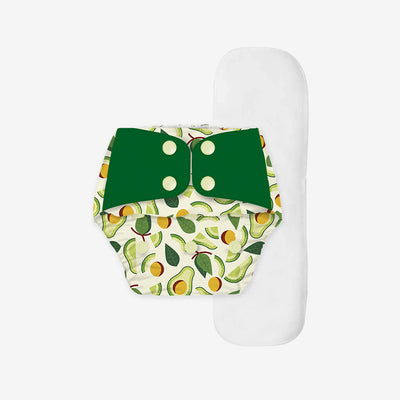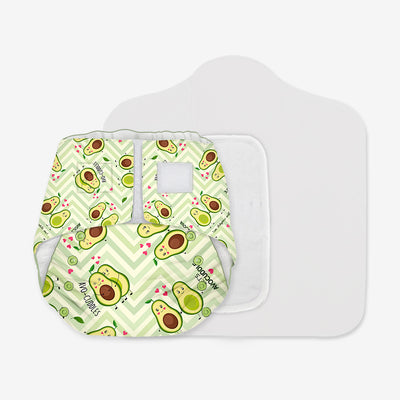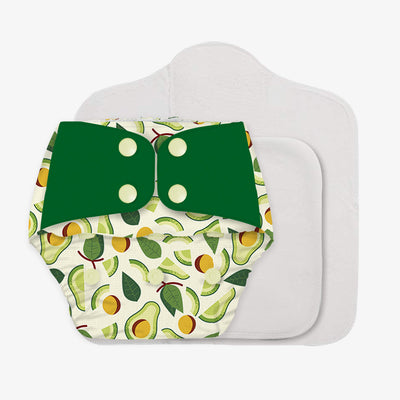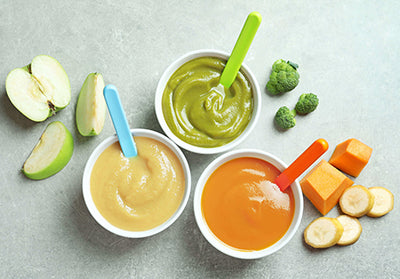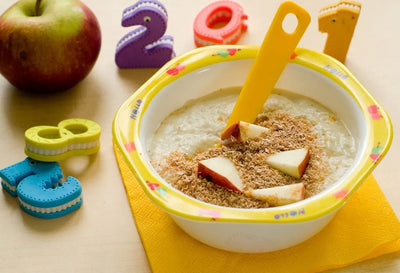Annaprashan Ceremony: Celebrating Baby's First Solid Food

Introducing your little one to solid food is a joyful milestone in their journey towards growing up, and what better way to celebrate it than with Annaprashan? Annaprashan is an important ritual celebrated in many cultures, where a baby is given their first taste of solid food. It's a moment filled with anticipation, excitement, and love, as family and friends gather to witness and bless this significant transition.
This article explores the joy of Annaprashan, offering tips on organizing a meaningful ceremony and choosing the right foods for your little one. Discover the significance behind this beautiful tradition and how it creates lasting memories for both parents and child. Join us as we celebrate this milestone, filled with laughter, love, and the joy of seeing your baby take their first steps into the world of solid food.
What is Annaprashan?
Annaprashan Ceremony, also known as Mukhe Bhaat or Rice Ceremony, is a traditional Hindu ritual in which a baby is fed solid food for the first time. It is considered an important milestone in a child's life, marking their transition from a milk-only diet to a more varied and nutritious diet. Annaprashan is usually celebrated when the baby turns six months old, as it is believed that their digestive system becomes ready for solid foods at this age.
The word Annaprashan is derived from the Sanskrit words Anna, meaning food, and Prashan, meaning to consume. The ritual involves feeding the baby a small portion of cooked rice, symbolizing the beginning of their lifelong journey with food. It is a joyous occasion celebrated with family, friends, and loved ones, who come together to bless the baby and offer their good wishes for their future.
Annaprashan's importance across different cultures
While Annaprashan is commonly associated with Hinduism, similar ceremonies are celebrated in various cultures around the world. In Bengali culture, it is known as Annaprashon or Mukheybhaat, while in South India, it is called Choroonu or Chowlo Prashna. Each culture has its unique rituals and traditions surrounding the introduction of solid food to a baby.
In Hinduism, Annaprashan is seen as an auspicious occasion that marks the beginning of a child's relationship with food. It is believed to bring good luck, health, and prosperity to the child. The ceremony is performed with religious rituals, including prayers and offerings to deities, seeking their blessings for the baby's well-being and future.
In Bengali culture, Annaprashan is celebrated with great enthusiasm. The baby's maternal uncle or aunt feeds them their first solid food, creating a joyous and memorable moment for the entire family. The ceremony is often followed by a grand feast, where friends and relatives gather to celebrate the baby's milestone.
When to celebrate Annaprashan
Choosing the right time to celebrate Annaprashan is essential to ensure that the baby is developmentally ready for solid food. Most parents choose to perform the ceremony when their child is around six months old. At this age, the baby's digestive system is more mature, and they can handle the transition from a liquid diet to solid food.
However, it is important to note that every child is unique, and their readiness for solid food may vary. Some babies may show signs of readiness, such as sitting up with support, showing interest in food, and being able to move food to the back of their mouth without pushing it out. Consulting with your pediatrician can help determine the best time to introduce solid food to your baby.
Preparing for the Annaprashan ceremony
Organizing an Annaprashan ceremony requires careful planning and preparation to ensure a meaningful and memorable event.
1. Choose a date and venue:
Select a date that is convenient for your family and close relatives. The ceremony can take place at home or at a venue of your choice. Consider the number of guests you want to invite and ensure that the venue can accommodate everyone comfortably.
2. Decorate the venue:
Create a festive atmosphere by decorating the venue with flowers, balloons, and colorful fabrics. Use traditional motifs and colors that reflect the cultural significance of the ceremony.
3. Select traditional attire:
Dress your baby in traditional attire that is comfortable and suits the occasion. Choose colorful and vibrant outfits that represent the cultural heritage of your family.
4. Arrange a priest or officiant:
If you wish to perform religious rituals during the ceremony, it is advisable to consult a priest or officiant who can guide you through the process. They can perform the necessary prayers and blessings to make the event more auspicious.
5. Prepare the Annaprashan food:
Choose a food that is easy to digest and suitable for your baby's age. Traditional options include mashed rice, lentils, and sweet dishes made with jaggery. Ensure that the food is prepared hygienically and is free from any potential allergens.
6. Plan the menu:
In addition to the first food, plan a menu that includes a variety of dishes for the guests to enjoy. Consider both vegetarian and non-vegetarian options to cater to everyone's preferences.
7. Send out invitations:
Prepare and send out invitations to your family, friends, and loved ones well in advance. Include all the necessary details such as the date, time, venue, and dress code, if any.
By following these steps, you can create a memorable Annaprashan ceremony that celebrates this important milestone in your baby's life.
Choosing the right food for Annaprashan
The choice of food for Annaprashan holds great significance as it symbolizes the beginning of your baby's culinary journey. It is important to select foods that are not only nutritious but also gentle on the baby's delicate digestive system. Here are some considerations to keep in mind while choosing the first food for your little one:
1. Start with single ingredient foods:
Begin with simple and easily digestible foods that are unlikely to cause allergies or digestive issues. Pureed fruits and vegetables, rice cereal, and mashed lentils are good options to introduce initially.
2. Introduce one food at a time:
To monitor any potential reactions or allergies, introduce new foods one at a time, waiting a few days before introducing another. This way, you can identify any adverse reactions and take appropriate action.
3. Consider the texture:
Gradually transition from pureed or mashed foods to foods with more texture. This helps in developing your baby's chewing and swallowing skills. Offer soft, cooked fruits and vegetables that can be easily mashed with a fork or spoon.
4. Choose nutrient-rich foods:
Opt for foods that are rich in essential nutrients such as iron, calcium, and vitamins. Include a variety of fruits, vegetables, grains, and proteins to ensure a balanced diet for your baby.
5. Avoid added sugars and salt:
Babies do not need added sugars or salt in their diet. Avoid adding these to their food, as it can affect their taste preferences and long-term health.
Remember, every baby is different, and their preferences and nutritional needs may vary. Observe your baby's cues and consult with your pediatrician to ensure that you are introducing the right foods at the right time.
Annaprashan menu ideas
Planning the menu for your baby's Annaprashan ceremony can be exciting and challenging at the same time. Here are some menu ideas to inspire you:
1. Rice:
Cooked rice is the traditional first food for Annaprashan. Offer a small portion of mashed or pureed rice to your baby, symbolizing the beginning of their relationship with food.
2. Lentils:
Mashed lentils, such as moong dal or masoor dal, are a great source of protein for your baby. Cook them until soft and mash them well before serving.
3. Vegetable purees:
Steam or boil vegetables like carrots, sweet potatoes, peas, or pumpkin, and puree them to a smooth consistency. These purees can be mixed with rice or lentils to add flavor and nutrition.
4. Fruit purees:
Pureed fruits like apples, bananas, pears, or avocados are a great way to introduce natural sweetness to your baby's diet. Make sure to remove any seeds or peels and mash the fruits to a smooth texture.
6. Soft cooked meats:
If you choose to introduce meat to your baby's diet, opt for tender and well-cooked options like chicken or fish. Ensure that the meat is mashed or shredded into small, easily chewable pieces.
7. Yogurt:
Plain, unsweetened yogurt is a good source of calcium and probiotics for your baby. Offer a small portion and observe any potential reactions or allergies.
What Are The Annaprashan customs and rituals
Annaprashan is not just about introducing solid food to your baby it is also a time to celebrate and honor your cultural traditions. The following are a few typical practices and ceremonies connected to Annaprashan:
1. Puja and prayers:
Many families choose to perform religious rituals and prayers during the Annaprashan ceremony. This includes seeking blessings from deities and offering prayers for the baby's well-being and future.
2. Feeding the baby:
The highlight of the ceremony is when the baby is fed their first solid food. Traditionally, this is done by the baby's maternal uncle or aunt, symbolizing their love and affection for the child.
3. Blessings from elders:
Family members, especially grandparents and elders, play an important role in the Annaprashan ceremony. They bless the baby and offer their good wishes for their future.
4. Feasting and celebration:
Annaprashan is often followed by a grand feast, where family, friends, and loved ones come together to celebrate the baby's milestone. It's a time to celebrate, have fun, and make wonderful memories.
5. Annaprashan gifts:
It is customary to present the baby with gifts and blessings during the ceremony. Traditional gift ideas include silver utensils, jewelry, clothes, or money in an envelope. These customs and rituals add depth and meaning to the Annaprashan ceremony, creating a memorable experience for both the baby and their loved ones.
Annaprashan is a celebration of growth, love, and new beginnings. It's a beautiful tradition that brings family and friends together to bless and witness your baby's first step into the world of solid food. As you organize the ceremony and choose the perfect food for your little one, remember that the true essence lies in the joy and love surrounding this milestone.



